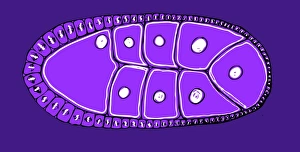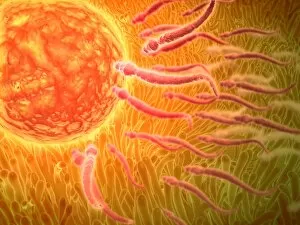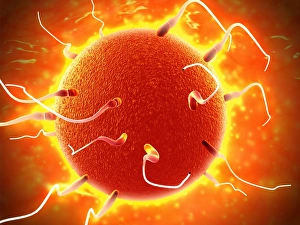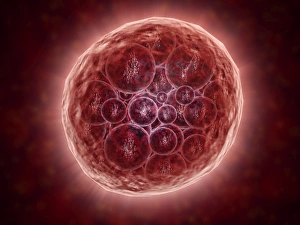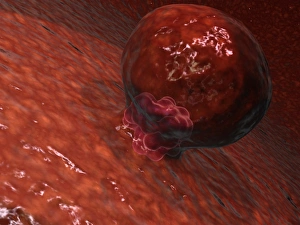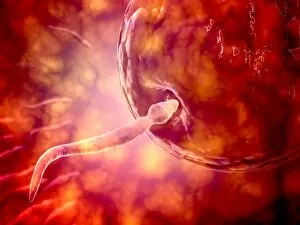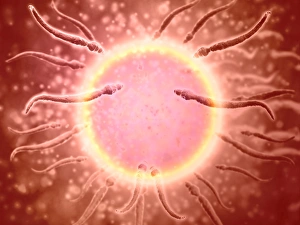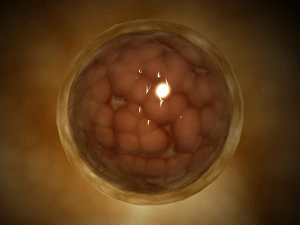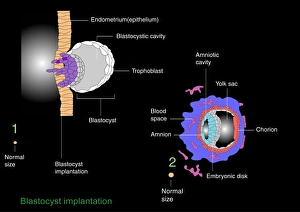Embryogenesis Collection
Embryogenesis, the miraculous journey of life's inception, unfolds through a series of captivating events
All Professionally Made to Order for Quick Shipping
Embryogenesis, the miraculous journey of life's inception, unfolds through a series of captivating events. Under the microscope's watchful eye, we witness the awe-inspiring dance of creation. In this microscopic view, tiny sperm with their flagella propel themselves towards the awaiting egg. With each graceful stroke, they navigate through a labyrinthine path guided by cilia, like explorers charting uncharted territories. As these determined swimmers approach their destination, anticipation fills the air. The concept of fertilization materializes before our eyes in a conceptual image that captures the essence of this pivotal moment – when two become one. A cluster of blastomeres begins to form a developing morula; an intricate symphony orchestrated by nature itself. These cells multiply and divide relentlessly as they prepare for their next chapter – implantation within the uterine wall. The blastocyst emerges from its protective shell and embarks on its mission to find solace in its new home. It delicately attaches itself to the nurturing walls of the uterus while simultaneously signaling hope for new beginnings. Meanwhile, ovulation takes center stage in another conceptual image depicting female fertility at its peak. A mesmerizing display showcasing nature's cyclical rhythm - an invitation for life to blossom anew. Once again under microscopic scrutiny, we observe male reproductive sperm entering the egg with unwavering determination. This union marks not only physical fusion but also symbolizes unity between generations past and future yet to come. An extraordinary tale that reminds us how life springs forth from seemingly infinitesimal beginnings. From those first tentative strokes towards destiny until final integration within maternal embrace - it is here that dreams take shape and miracles unfold before our very eyes.

